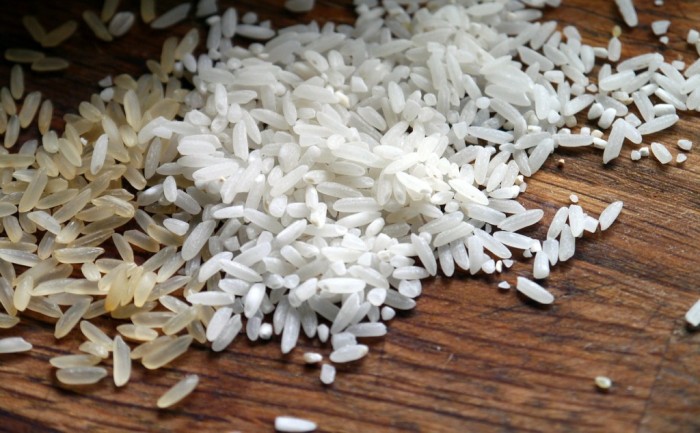by Katie Mooney,
We may sometimes contemplate the amount of sugar, fat, or cholesterol contained in a food item before consuming it – that’s being a smart and healthy consumer. Manufacturers must provide a detailed list of ingredients on the side of food packaging, so we can then make the decision for ourselves whether to consume the food product or not. We have the right to be informed, right?
But what if we told you that there was a significant and dangerous discovery involving rice being made with synthetic materials (in other words, plastic) – a terrifying and mind-boggling reality.
We all know that some companies use chemicals in their foods, but China’s synthetic rice is taking the danger to a whole new level.
Research has shown that certain rice factories in China have been producing a “fake rice substitute” in place of the popular and more expensive Wuchang rice, for greater profit. According to the Korean Times, this food fraud is being created using a mixture of potatoes, sweet potatoes, and synthetic resin (plastic). These ingredients are mixed together and formed into “grains” which very closely resemble the appearance of actual grains of rice. The rice substitute is then sprayed with a fragrance to mimic the smell of Wuchang rice, making it difficult to decipher between the two versions.
As you would expect, consuming this “plastic rice” is extremely harmful and toxic to one’s health, and is causing quite an uproar. One Chinese official warned that eating three bowls of this man-made rice would be equivalent to ingesting one plastic bag.
Although “plastic rice” isn’t being distributed here in the US, it has found its way to countries other than China (which is scary). So, whether you are planning a trip overseas, or just want to be vigilant – here are some helpful hints to ensure that your rice is sans synthetics:
1. Sink Or Swim?
Stir a tablespoon or two of the rice into a glass of water and observe. Authentic rice is more dense, and will sink to the bottom of the glass. Rice formulated with plastic will float.
2. Fungus Among Us
Cook a small portion of the rice and place it into a container; leave it to rest on the counter. If after a few days, mold has not begun to form (as it should on actual rice) you know you have a plastic imposter.
3. Fight The Grime
Be observant while boiling your rice. If a thick layer of residue is formed at the top of the water during this process – you may have reason for concern.
4. Strike A Match
When a flame is put to fake rice, the “rice” will emit a plastic or even sweet potato smell. Yes, it will burn as you would imagine plastic would. So, for peace of mind – light it up!
Watch below for a few of the “fraud tests” in action.
In reality, the container of rice in your pantry is most likely safe – but stories such as this are in fact real, eye-opening, and good reminders of why it’s SO very important to be informed consumers. Share this rice reality with your loved ones, and help others to always be vigilant and aware as well!
Sources: AltHealth Works, The Korean Times, Cartoons Mayank, TechnoFizi,
Article: HealthEternally








